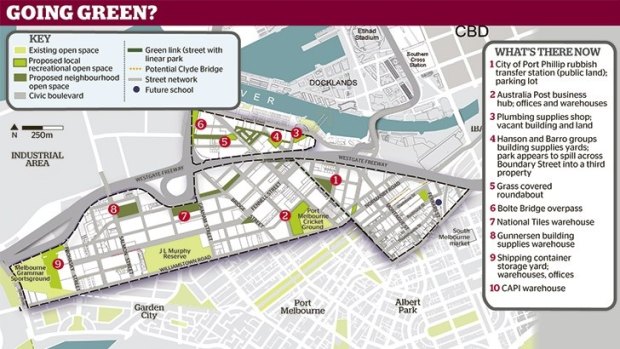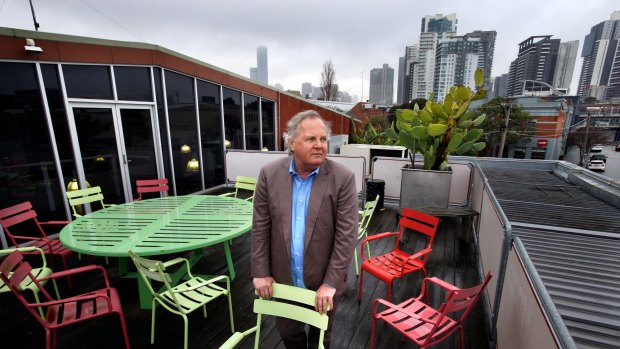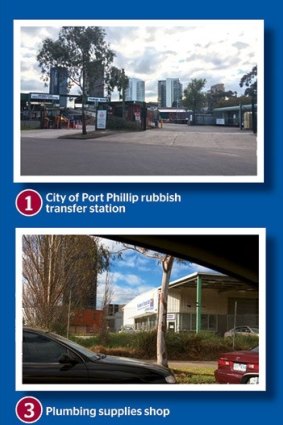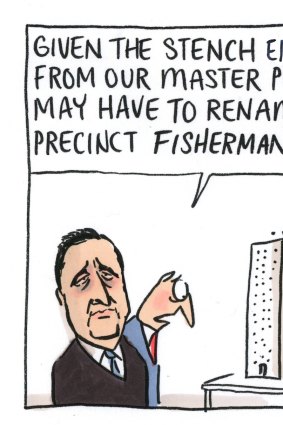By Chris Vedelago and Clay Lucas
The state government could be forced to spend up to $340 million buying private land to turn into public parks at vastly inflated prices in light of a major planning blunder in the new inner city suburb of Fishermans Bend.
The Sunday Age can reveal the government's decision to re-zone 250 hectares of industrial land in Port Melbourne and South Melbourne before creating parks and open spaces has doubled or tripled its value virtually overnight, raising the spectre of a blow-out in costs for taxpayers.

More than 90 per cent of the space the government has earmarked for parks is privately owned.
Other controversial moves include designating land under the Bolte Bridge and a busy traffic roundabout as ''recreational space'', as well as locating a new park and primary school near a brothel.
The decisions have been blasted by planning experts, residents and businesses, with one claiming the Napthine government's parks strategy for Fishermans Bend appears to have been created by ''magic trick''.

Pitzy Folk at his office and warehouse in Buckhurst Street South Melbourne where the area has been earmarked as a park. Credit: Angela Wylie
Last month, Planning Minister Matthew Guy released a masterplan for the future high-rise residential precinct, which it has billed as the "most significant urban renewal project" in the country.
The document promises a dozen new parks and ''green links'' to ensure nearly all 80,000 anticipated residents will be within walking distance of public open spaces.
But a Sunday Age investigation has found the plan will depend on buying properties from businesses, land owners and developers who stand to reap a windfall as a result of the re-zoning.
More than 90 per cent of the space the government has earmarked for parks is privately owned – an area more than five times the size of the MCG.

Port Phillip Council has confirmed the value of land in the area doubled or even tripled after the precinct was rezoned from industrial to Capital City in 2012. The reason why the rezoning was done ahead of creating a formal strategy for Fishermans Bend "is a question for Minister Guy", one senior council officer said.
Mr Guy did not respond to a list of questions submitted to his office.

Illustration: Matt Golding.
Opposition leader Daniel Andrews said on Sunday that the Fishermans Bend rezoning process had been ‘‘botched from start to finish’’ because even land needed for parks had now ‘‘been zoned at the highest and best value’’.
‘‘Because of Matthew Guy having botched this from start to finish, this may well cost taxpayers hundreds of millions of dollars,’’ Mr Andrews said. ‘‘It’s much like the Ventnor debacle, and much like most things that Matthew Guy touches.’’
Developers have been jockeying to get into the precinct ahead of the rezoning and the release of the planning strategy in anticipation of a massive spike in prices.
Mark Wizel, a director of commercial real estate agency CBRE, estimates the Fishermans Bend park sites could collectively be worth $340 million or more based on their current ''development potential''.
"Mainland Chinese development companies in particular seem to have a very strong level of interest for suitable development opportunities within Fishermans Bend with specific interest in the Lorimer and Salmon Street precincts," he said.
The spiralling cost of buying land to transform into parks could force a blow-out in the estimated $1.3 billion that needs to be spent on new infrastructure for the suburb, which is expected to be largely covered by a ''developer contribution levy''.
Helen Halliday, convener of community group the Fishermans Bend Network, said the government's strategy was ''incoherent'' for failing to confirm in advance ''fundamental issues'' like locating and acquiring land for parks.
''To negotiate with landowners down there, they should have started off that process before they rezoned it, not after,'' she said. ''They could have said let's do a collaboration and we can rezone this part of the land if you give us that part of it for parks.''
Questions are also being raised about the fairness and effectiveness of the planning process after the Napthine government failed to consult with businesses and land owners whose properties have been unilaterally earmarked as future parks.
More than a dozen major land holders and businesses – including Australia Post – are among those whose properties were ''painted green'' in the masterplan, some of whom were taken completely by surprise.
"We were told nothing. When the plans came out we couldn't work out where on the map our building was. It had disappeared," one long-time business operator said. "They didn't even have the courtesy of putting a dotted line suggesting there was a real business here. It was just gone – like a magic trick.''
Entrepreneur Pitzy Folk, who built a distribution warehouse for his CAPI drinks business in South Melbourne, said he has never been formally notified by the government that his land had been designated as a park.
"We're probably the first cab off the rank in terms of a property the government would have to buy but I've heard nothing. I have no issue selling as long as I get fair market value. But they've basically destroyed the open market doing this.''
Mr Folk submitted plans to develop the property into apartments about nine months ago but has received no decision from the government about his application. ''All I know is that they have painted my land green on their map. I'm in limbo.''
It's the latest in a series of controversies to erupt over the government's plans for Fishermans Bend, where height limits for new apartment towers are ''discretionary''.
The government has also said the highest towers will be in the part of Fishermans Bend dubbed "Montague" because of its plan to ditch the long-promised "Melbourne Metro'' under Parkville and the central city, and instead build the ''Melbourne Rail Link'' from Southern Cross via Montague to South Yarra.
But the Fishermans Bend strategy released last week also failed to identify a precise route and local station for the Melbourne Rail Link, instead designating a large chunk of South Melbourne as a ''rail investigation area''.
One senior transport bureaucrat said much of the public service was still in the dark more than six months after the idea was first floated. "We still don't know where any of it is going – we are still working on how we get it under the West Gate, let along Fishermans Bend," they said.
For parks designated on private land, the Fishermans Bend strategy states: "These locations are indicative only. While it is desirable to create open spaces as shown, final positions are to be negotiated through the development contributions and [planning] processes."
However, land acquisitions will be inevitable as less than 10 per cent of the planned parks and open spaces are located on publicly owned land. Developers are required to set aside only 8 per cent of a site as open space under the plan.
cvedelago@theage.com.au